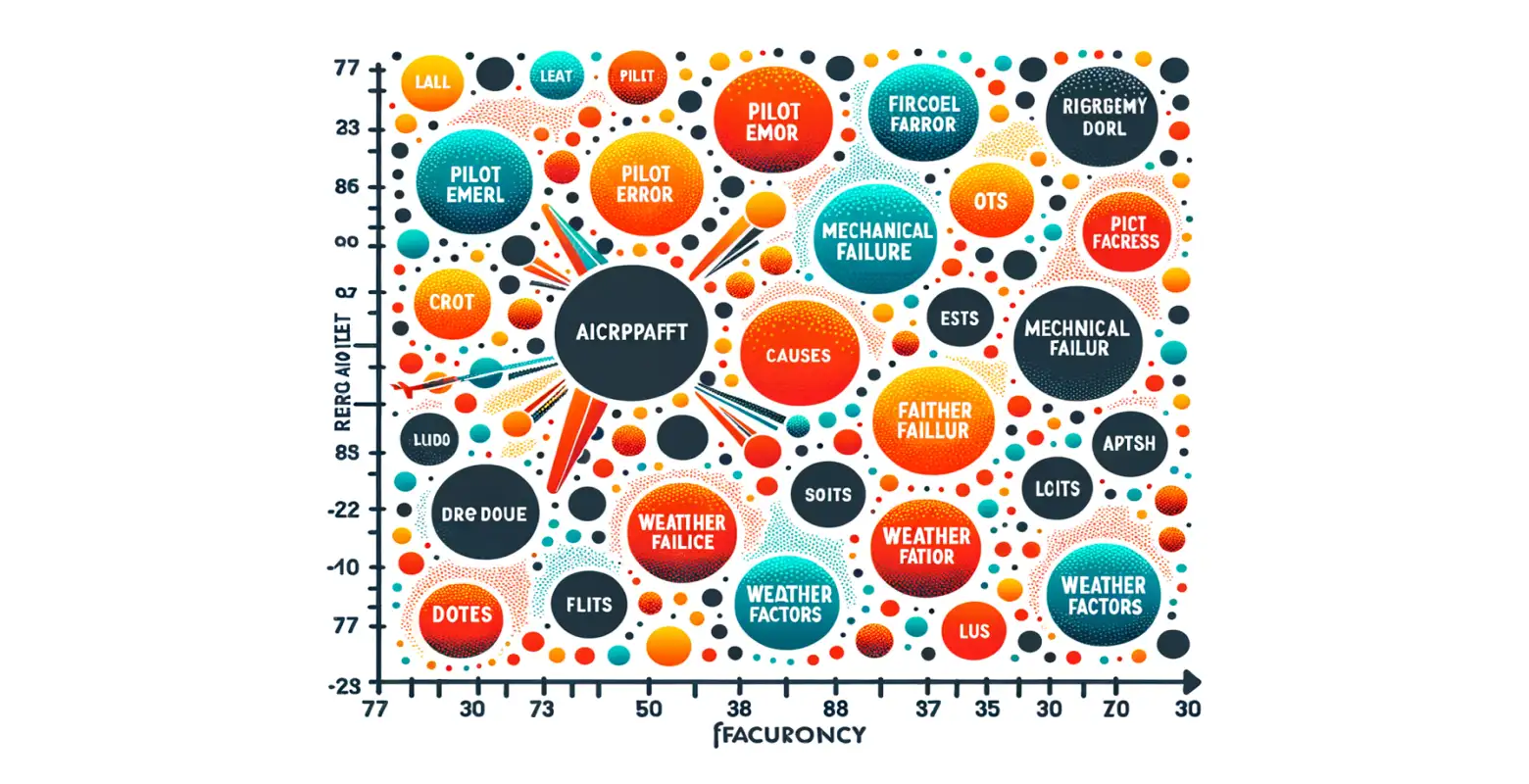What are the most common causes of aviation accidents?
Introduction
Contemporary aviation is one of the safest means of transportation, however, like any technology, it is not free from failures. Aircraft accidents, although rare, attract significant media attention and raise societal concerns. It is worth understanding the most common causes of aviation failures to better appreciate the efforts put into improving safety. In this article, we will examine various aspects contributing to failures, from human errors to technical malfunctions, considering historical data and contemporary trends.
Human Factors
Pilot errors constitute a significant portion of aviation accidents. Pilots are responsible for safely operating the aircraft, but even the most experienced ones can make mistakes. Factors such as fatigue, stress, improper decisions, or incomplete understanding of the situation can lead to disasters. For example, research conducted by Boeing indicates that about 50% of aviation accidents are related to human errors.
Inadequate communication between the cockpit crew and air traffic control also plays a crucial role. Communication errors can lead to misunderstandings that can end tragically in critical situations. Therefore, communication standards are strictly regulated and trained.
Technical Issues
Engine failures are another common cause of accidents. Modern aircraft engines are designed with reliability in mind, but sometimes they fail due to material defects, design errors, or improper servicing. An example is the crash of United Airlines Flight 232 in 1989, where an engine failure led to the aircraft's breakup.
Navigation system failures and avionics malfunctions can also be critical. Today's aircraft are highly automated, which increases their efficiency, but electronic system failures can lead to loss of control over the aircraft. The crash of Air France Flight 447 in 2009 was partly caused by a speed sensor failure.
Weather Conditions
Unpredictable atmospheric conditions can pose a serious challenge to aviation. Storms, turbulence, icing, and strong winds can significantly impede flights, and in extreme cases, lead to disasters. Aircraft are equipped with advanced systems to cope with adverse conditions, but they still pose a risk, especially if pilots have to make quick decisions with limited visibility.
Management and Procedure Errors
Shortcomings in operational procedures and management errors can lead to serious consequences. Airlines and airport managers must ensure proper flight planning, training, and adherence to safety standards. Improper management can lead to situations where the crew is inadequately prepared or the aircraft are improperly maintained.
Air traffic control issues are another aspect. Effective management of air traffic is crucial for flight safety. Controller errors, such as improper coordination of aircraft in crowded skies, can lead to collisions.
Terrorist Attacks and External Interference
Terrorist attacks on civil aviation are rare but have catastrophic consequences, as shown by the events of September 11, 2001. Airlines and airports implement numerous security measures to prevent such incidents, but the risk still exists and requires constant attention.
External interference, such as cyber-attacks, are becoming an increasingly real threat in the digital age. Aircraft are increasingly reliant on information systems, making them vulnerable to hacker attacks that can disrupt the operation of navigation or communication systems.
Conclusion
In conclusion, aviation accidents result from a complex interplay of human, technical, and environmental factors. Although aviation is one of the safest means of transportation, continuous efforts are being made to improve safety. Understanding the causes of accidents is crucial for further development of procedures and technologies that minimize risks. Contemporary preventive actions, such as advanced training systems, modern technologies, and rigorous safety standards, are essential to make air travel even safer. It is important for passengers and aviation professionals to be aware of these factors and strive together for further improvement of aviation safety.






Number of comments: 0